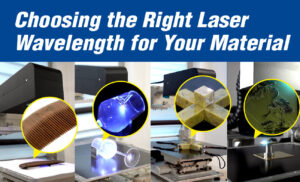
What is Macular OCT Scan
Macular OCT (Optical Coherence Tomography) is a cutting-edge, non-invasive imaging technique used to capture detailed, cross-sectional images of the retina, particularly the macula, which is essential for central vision.
This technology is vital in the field of ophthalmology because it allows eye care professionals to detect and monitor a range of retinal conditions, such as macular degeneration, diabetic retinopathy, and macular edema, with remarkable precision. By providing early detection of these potentially sight-threatening issues, Macular OCT plays a crucial role in preserving vision and guiding effective treatment strategies.
How Macular OCT Scan Works
Macular OCT works by using light waves to create detailed, cross-sectional images of the retina. During the scan, the patient simply sits in front of the OCT machine and looks at a target while the device scans the eye. The process is quick and painless, taking just a few seconds per eye.(1)
The OCT machine sends a beam of light into the eye, which reflects off the different layers of the retina. The reflected light is then captured and analyzed by the machine to create high-resolution images. These images show the various layers of the retina, allowing eye care professionals to see detailed structures and identify any abnormalities in the macula.
Key Advantages of Macular OCT scan
Macular OCT scan offers several key advantages over other imaging techniques:
- High Resolution: OCT provides highly detailed images of the retina’s layers, allowing for the detection of even the smallest abnormalities that other techniques might miss.
- Non-Invasive and Painless: Unlike some imaging methods that require injections or dyes, OCT is completely non-invasive and painless, making it comfortable for patients.
- Real-Time Imaging: OCT captures images in real-time, allowing for immediate analysis and decision-making during an eye examination.
- Early Detection: OCT can detect subtle changes in the retina at an early stage, enabling timely intervention and better management of conditions like macular degeneration and diabetic retinopathy.
- Safe for Repeated Use: Because OCT uses light waves rather than radiation, it is safe for repeated use, making it ideal for monitoring the progression of chronic eye conditions over time.
Applications of Macular OCT Scan
Macular OCT scans have a wide range of applications in diagnosing and managing eye conditions. Here are the primary ones:
- Age-Related Macular Degeneration (AMD): OCT is essential for detecting early signs of AMD, a leading cause of vision loss in older adults. It helps in monitoring the progression and effectiveness of treatments.
- Diabetic Retinopathy: In patients with diabetes, OCT is used to detect diabetic retinopathy and macular edema, both of which can lead to significant vision loss if not treated. OCT helps in assessing retinal swelling and fluid accumulation.
- Macular Holes and Puckers: OCT accurately identifies macular holes (small breaks in the macula) and puckers (wrinkles in the macula), which can distort vision. It is also used to guide surgical decisions and monitor post-operative outcomes.
Conclusion
Macular OCT scans represent a significant advancement in eye care, offering a non-invasive and highly accurate method for diagnosing and managing various retinal conditions. This technology is particularly crucial for individuals at risk of Age-Related Macular Degeneration, Diabetic Retinopathy, and Macular Edema, enabling early detection and timely intervention that can preserve vision. With its ability to provide detailed, real-time images of the retina, Macular OCT not only enhances the precision of diagnoses but also plays a vital role in monitoring treatment efficacy.
As eye health continues to be a critical aspect of overall well-being, incorporating regular Macular OCT scans into the care routine of at-risk individuals can make a profound difference in maintaining clear, healthy vision. If you or someone you know falls into any of the high-risk categories discussed, consulting with an eye care professional about the benefits of Macular OCT is a proactive step toward safeguarding your sight for the future.
The laser galvanometer is a key component that drives the precision, speed, and accuracy of Macular OCT scans, making it possible to obtain the high-quality images necessary for effective diagnosis and management of retinal conditions. If you need to select a galvanometer for your OCT machine, please contact us. We are a professional laser galvanometer R&D manufacturer and can provide you with suitable solutions.
REFERENCES
(1) https://www.medicalnewstoday.com/articles/oct-macular-degeneration





